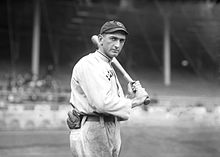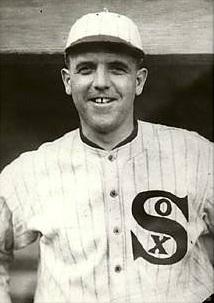
Edward Victor Cicotte, nicknamed "Knuckles", was an American right-handed pitcher in Major League Baseball best known for his time with the Chicago White Sox. He was one of eight players permanently ineligible for professional baseball for his alleged participation in the Black Sox scandal in the 1919 World Series, in which the favored White Sox lost to the Cincinnati Reds in eight games. The "fixing" of the 1919 World Series is the only recognized gambling scandal to tarnish a World Series.
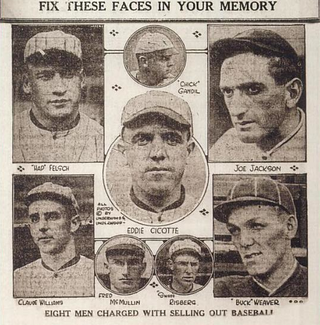
The Black Sox Scandal was a Major League Baseball game-fixing scandal in which eight members of the Chicago White Sox were accused of losing the 1919 World Series against the Cincinnati Reds on purpose in exchange for money from a gambling syndicate led by Arnold Rothstein. As a response, the National Baseball Commission was dissolved, and Judge Kenesaw Mountain Landis was appointed to be the first Commissioner of Baseball and given absolute control over the sport to restore its integrity.

Charles Albert Comiskey, nicknamed "Commy" or "the Old Roman", was an American Major League Baseball player, manager and team owner. He was a key person in the formation of the American League, and was also founding owner of the Chicago White Sox. Comiskey Park, the White Sox's storied baseball stadium, was built under his guidance and named for him.

William Jethro "Kid" Gleason was an American Major League Baseball (MLB) player and manager. Gleason managed the Chicago White Sox from 1919 through 1923. His first season as a big league manager was notable for his team's appearance in the World Series and the ensuing Black Sox Scandal, although Gleason was not involved in the scandal. After leaving the White Sox, Gleason was on the coaching staff for the Philadelphia Athletics, until 1931.

Charles Arnold "Chick" Gandil was an American professional baseball player. He played for the Washington Senators, Cleveland Indians, and Chicago White Sox of the American League. He is best known as the ringleader of the players involved in the 1919 Black Sox scandal. Described by his contemporaries as a "professional malcontent", he was physically well-built at 6 ft 2 in (1.88 m) and 195 lb (88 kg), and had a stern and challenging demeanor. He used both to display his toughness, and also did not hesitate to use sheer strength to get his point across.

Raymond William Schalk was an American professional baseball player, coach, manager and scout. He played as a catcher in Major League Baseball for the Chicago White Sox for the majority of his career. Known for his fine handling of pitchers and outstanding defensive ability, Schalk was considered the greatest defensive catcher of his era. He revolutionized the way the catching position was played by using his speed and agility to expand the previously accepted defensive capabilities for his position. Schalk was elected to the Baseball Hall of Fame in 1955.

The 1918 World Series was the championship series in Major League Baseball for the 1918 season. The 15th edition of the World Series, it matched the American League champion Boston Red Sox against the National League champion Chicago Cubs. The Red Sox beat the Cubs four games to two. The Series victory for the Red Sox was their fifth in five tries, going back to 1903. The Red Sox scored only nine runs in the entire Series, the fewest runs by the winning team in World Series history. Along with the 1906 and 1907 World Series, the 1918 World Series is one of only three Fall Classics where neither team hit a home run.
The 1959 World Series featured the National League champion Los Angeles Dodgers beating the American League champion Chicago White Sox, 4–2. Each of the three games played at the Los Angeles Memorial Coliseum drew record crowds, Game 5's attendance of 92,706 continues to be a World Series record to this day, and one that cannot feasibly be broken in any modern ballpark.

The 1917 World Series was the championship series in Major League Baseball for the 1917 season. The 14th edition of the World Series, it matched the American League champion Chicago White Sox against the National League champion New York Giants. The White Sox won the Series four games to two. The Series was played against the backdrop of World War I, which dominated the American newspapers that year and next.
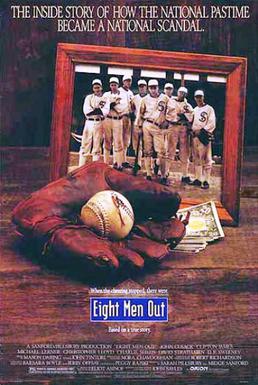
Eight Men Out is a 1988 American sports drama film based on Eliot Asinof's 1963 book Eight Men Out: The Black Sox and the 1919 World Series. It was written and directed by John Sayles. The film is a dramatization of Major League Baseball's Black Sox Scandal, in which eight members of the Chicago White Sox conspired with gamblers to intentionally lose the 1919 World Series. Much of the movie was filmed at the old Bush Stadium in Indianapolis, Indiana.

Richard Henry Kerr was an American professional baseball pitcher for the Chicago White Sox of Major League Baseball. He also served as a coach and manager in the minor leagues.
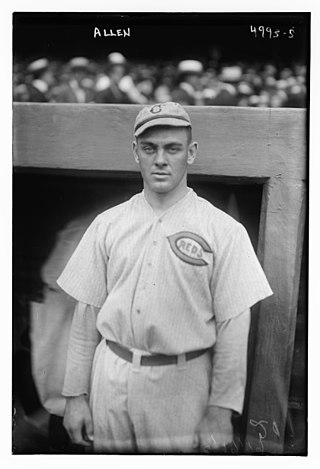
Horace Owen Eller, better known as Hod Eller, was a pitcher in Major League Baseball.
The following are the baseball events of the year 1919 throughout the world.
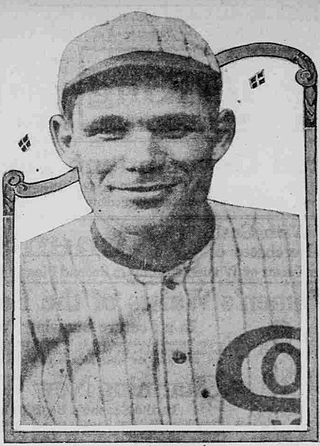
John Edward Murphy, nicknamed "Honest Eddie", was an American professional baseball right fielder. He played in Major League Baseball for the Philadelphia Athletics, Chicago White Sox and Pittsburgh Pirates.
The Chicago White Sox are a Major League Baseball team based on the South Side of Chicago. They are one of eight charter members of the American League, having played in Chicago since the inaugural 1901 season. They have won six American League pennants and three World Series titles, most recently in 2005.
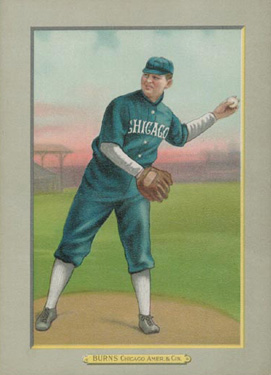
William Thomas Burns, nicknamed "Sleepy Bill", was an American baseball player who played as a pitcher in Major League Baseball (MLB) for five different teams from 1908 to 1912. He earned his nickname for his noticeable lack of intensity on the mound. Burns was best known for his involvement in the alleged fixing of the 1919 World Series, dubbed the Black Sox Scandal.
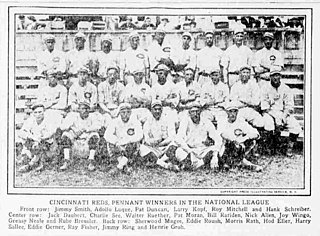
The 1919 Cincinnati Reds season was a season in American baseball. The Reds won the National League pennant, then went on to win the 1919 World Series. The team's accomplishments were overshadowed by the subsequent Black Sox Scandal, when it was discovered that their American League opponents, the Chicago White Sox had conspired to throw the series.
The 1917 Chicago White Sox dominated the American League with a record of 100–54. The 100 wins is a club record that still stands. Their offense was first in runs scored while their pitching staff led the league with a 2.16 ERA.
The 1919 Chicago White Sox season was their 19th season in the American League. They won 88 games to advance to the World Series but lost to the Cincinnati Reds. More significantly, some of the players were found to have taken money from gamblers in return for throwing the series. The "Black Sox Scandal" had permanent ramifications for baseball, including the establishment of the office of Commissioner of Baseball.
The 1920 Chicago White Sox season was a season in American baseball.


